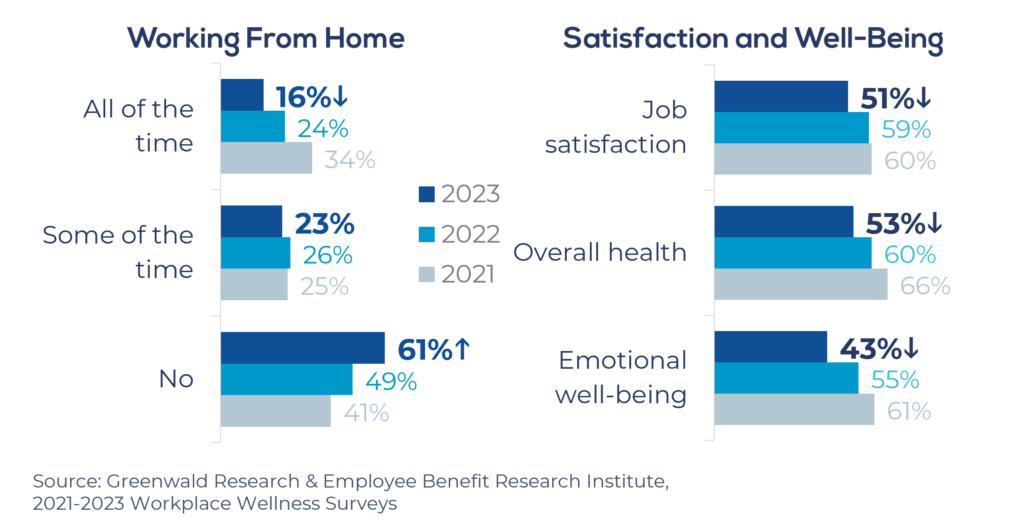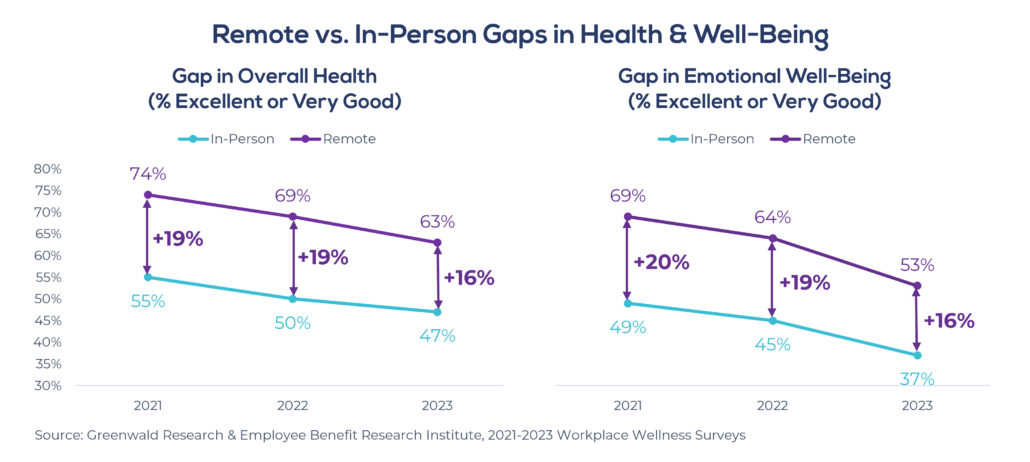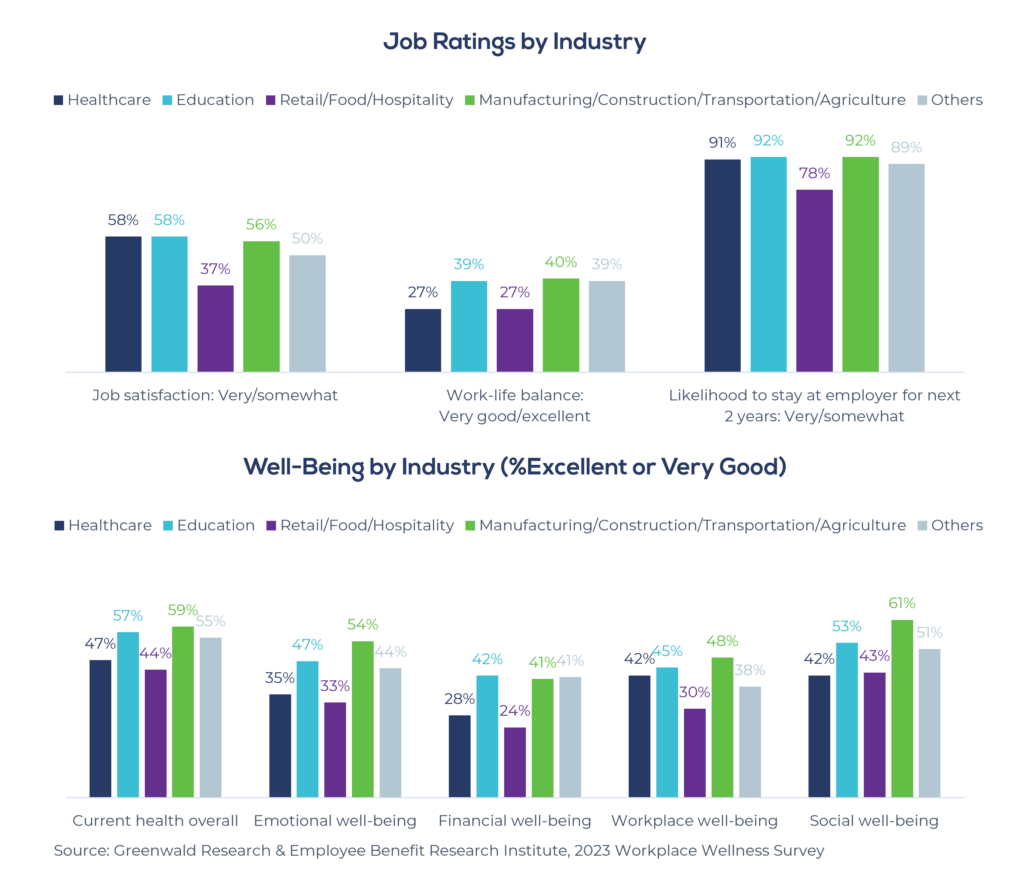Are Workers Better Off At Home?
By: Sara Rubinstein 2/27/2024
The number of U.S. workers returning to the office is increasing. The results from the 2023 EBRI/Greenwald Workplace Wellness Survey show that six in ten workers never work from home, up from 49% in 2022 and 41% in 2021.
But as workers return to the office, a troubling trend is emerging: Down from six in ten last year, only half of all workers report being extremely or very satisfied with their job overall. Overall health and emotional well-being are also down. Is an increased return to the office having a negative impact on workers?
In-Person vs. Remote Work Trends
When it comes to work-life balance, in-person workers feel worse: only 30% describe it as excellent or very good compared to 45% of remote workers. In-person workers also rate their overall health and well-being worse than remote workers. However, in-person and remote workers do not greatly differ in job satisfaction, with roughly half feeling extremely or very satisfied overall, and nine in ten being likely to stay with their current employer for the next two years.
In general, those who give a low rating regarding their overall health and emotional well-being are less likely to be satisfied with their job. So, if there is a difference in well-being between in-person and remote workers, why isn’t there a difference in job satisfaction? What else could be causing 2023’s decrease in overall job satisfaction?
Perhaps it has to do with when workers returned to an in-person setting. Workers who returned to in-person in 2023 are less likely to rate their well-being highly than those who went back to the office earlier. One hypothesis is that there is a brief reacclimating period that former remote workers must endure before their well-being returns to baseline levels. While this is an intriguing theory, there is still no difference in overall job satisfaction (49% vs. 51% in 2022 and 2021).
We also see that the gap in overall health and emotional well-being between in-person workers and remote workers is closing slightly, suggesting that something other than a return-to-office is responsible for lower health, well-being, and job satisfaction scores in 2023.
If 2023’s job satisfaction decrease is not driven by more employees returning to the office, the question why in-person workers rate job satisfaction on par with remote workers but rate well-being metrics lower still persists. Perhaps the nature of the work being done plays a role. Are workers in industries with fewer remote work opportunities less well?
The Impact of Industry
When the pandemic hit, not every worker could stay at home. Many industries required workers to stay in-person or return earlier than others, including healthcare, education, retail, food, hospitality, manufacturing, construction, transportation, and agriculture. How do these workers feel?
Compared to all others, these industries report worse work-life balance and are less likely to say their financial well-being is excellent or very good. Those in retail, food, and hospitality stand out even among other primarily in-person industries. They are least likely to stay with their employer, report worse work-life balance, are least satisfied with their job overall, and are least likely to say their well-being is excellent or very good. Similarly, healthcare workers also have relatively poor work-life balance and poor emotional and financial well-being. However, healthcare workers are more satisfied with their job overall.
So what does this mean overall? We know that job satisfaction and the well-being of workers is down. In-person workers report worse well-being and more people are returning to an in-person work setting. But their job satisfaction remains unaffected. What else could be causing this decrease? Is there something else happening to these workers that needs exploring? Or is it too soon to see the effects of this shift in work setting? It will be interesting to watch how remote work continues to impact workers’ well-being and job satisfaction overall.
To learn more about worker well-being, please view the 2023 Workplace Wellness Report released by Greenwald Research and the Employee Benefit Research Institute (EBRI) or watch Greenwald Research’s coffee break on workplace wellness.











